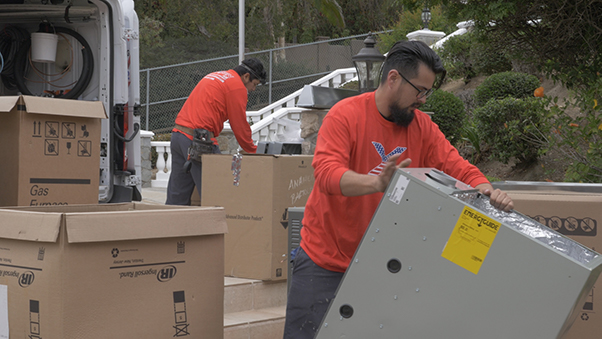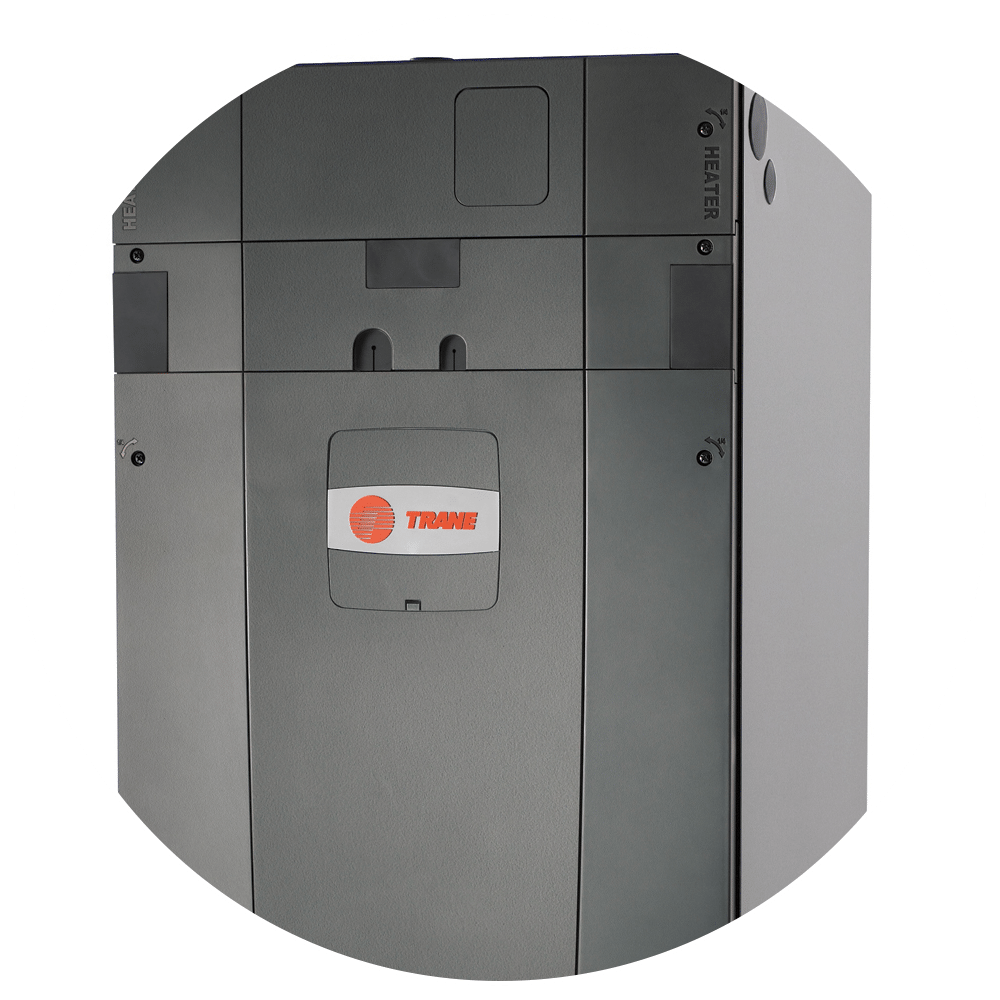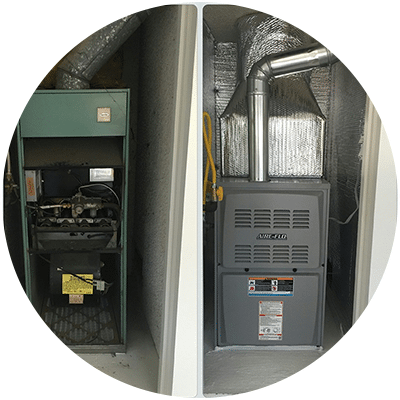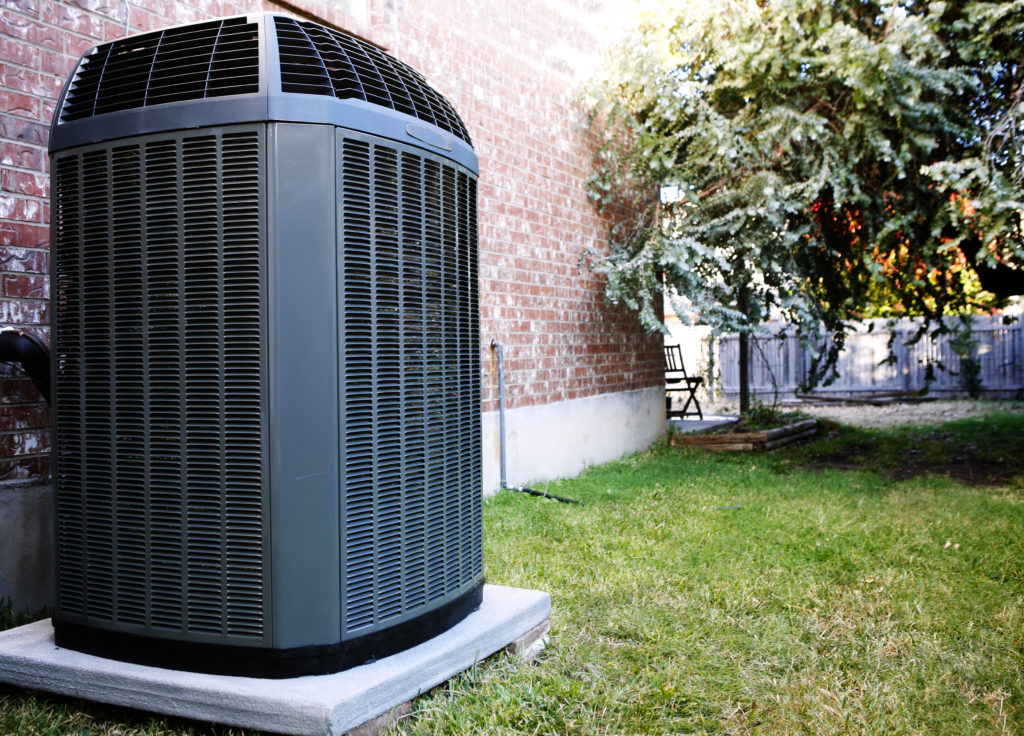When to Replace Your Gas Furnace?

Your home furnace is one of the most important parts of your home, it is quite smart to keep track of how efficient and effective your furnace is working as time rolls on. You need to know when it is time to repair or replace your furnace. The costs of reoccurring maintenance can be quite costly and it might end up costing more than just replacing your furnace altogether. An outdated furnace can cost more than just money, as it also can pollute the air that your family is breathing. These tips will help you determine when it might be time to buy a new heating system.
When it’s time, it’s time
If your furnace is 11 years or younger and has had routine maintenance over the years then you should have nothing to worry. If your furnace is a little older then you might have seen some warning signs that it might be time to replace your furnace.
Signs of Warning
As a homeowner, it is crucial to be aware of warning signs that your appliances might be running on their last leg. Using old, outdated appliances can be costly and dangerous.
Age
The average lifespan for a furnace is around 16 to 20 years. It is crucial to have your furnace inspected regularly to keep it up and running efficiently, this will assure a long lifespan. If your furnace is nearing this age or is already at this age, it may be time to start looking for your next furnace. The new technology that furnaces now come with will shock you. Your power bill will be improved tremendously and you will also see an improvement in air quality.
Energy Bill Cost
Have you begun seeing an increase in your bill and didn’t know why? This could be because of your old furnace. Their ability to create heat is greatly diminished over the years of use. A HUGE warning sign for your furnace effectiveness and efficiency is an increase in your power bill cost & This is usually the biggest factor that pushes people over the edge.
House Temperature
Are you struggling to keep warm in the winter? Your furnace will spend hours trying to get the house warm but will never reach the desired temperatures for the different rooms in the house? This is because your furnace may be outdated and not have enough power to heat the entire house.
Newer furnaces are packed with brand-new technology to allow furnaces to be most effective. A new furnace purchase will prove to be a great investment over time because of a decreased power bill, and a perfectly heated home for a time to come. We listed a few of the warning signs that your furnace may need a new replacement. It is a big investment for your home but wasting money on repairs won’t solve any long-term problems that an old furnace has. You will not regret investing in a new piece of equipment, your home will finally feel comfortable on those cold winter nights and your power bill will see a drop in price.
Call NexGen HVAC & Plumbing
Our expertise and commitment to customer satisfaction make us the leading HVAC company in Southern California. To learn more about our equipment, services, and protection plan, book an appointment online or call 888-277-0415. company and HVAC repair technicians you know, schedule today! 833-729-9735
Broken Furnace? Here’s What You Should Do

Did your heart stop working and you don’t know how to fix it? There are a few things that could stop your heat from working and we are here today to give you a few tips to diagnose your main problem.
Before you call any sort outside help, you should check to see if your furnace is actually broken or temporarily disabled because of a few fixable issues. Make sure to keep reading to discover the root problem and how you can fix them.
Air Vents
First, you must check the most obvious thing, is air flowing through your air vents into your rooms? You may need to grab a neighbor's ladder or the nearest chair depending on your ceiling height. Reach over to your vent and check to see if you feel the air. If not, try adjusting the vent angle. If this doesn’t work, see if there could be any debris blocking the vent. Sometimes lint and debris can build up in the vent causing airflow issues.
Check the Gas
Most furnaces are gas-powered and will have a pilot light inside one of the removable panels. Make sure to check the manual for the furnace if it is readily available, it will help you find the gas valve and pilot light areas. First, check to see if the pilot light is lit, if there is a lit flame then this is not the root cause of your issue. Keep reading to discover other ways to fix your heat problem.
Thermostat Issues
A lot of the time heating related issues is caused by a broken thermostat. These can become faulty and break over time. To check to see if your thermostat is working correctly try turning up or down the temperature setting and see if your furnace reacts in any way. If it does you will know your thermostat is not the cause.
Furnace Vents
Most furnaces have vents that are used for exhaust and intake. Check to see if you feel any sort of heat being exhausted from your furnace and clear any lint or debris that could be blocking potential airflow.
Furnace Filters
Changing filters is never something people put on their weekly to-do lists. Dirt and lint can build upon these filters and can cause a lot of issues with airflow. Warm air will not be able to pass through the filter and can cause the furnace to break down. Make sure to change your furnace filters every few months to assure your furnace is receiving proper filtering.
After these few tips hopefully your furnace will be back up and running in no time! If these tips did not get your heater back on, it may be time to call your local NexGen Air. We provide great quality work for a great price and promise to get your house temperature back to normal quickly.
Call NexGen Today
Our expertise and commitment to customer satisfaction make us the leading HVAC company in Southern California. To learn more about our equipment, services, and protection plan,
book an appointment online or call
888-277-0415.
Why is My Furnace Leaking Water?

This goes without saying, but you should never see water leaking from your furnace. Ever. This is a solid indicator that something is either dripping, leaking, or not draining properly. Luckily, most of the time this is just a minor problem that can easily be serviced.
Causes of Condensation
While cooling, the evaporator coil and the suction line can create condensation. This is why it is important that these components are properly sealed and insulated. If the insulation on the suction line is missing, it can start leaking. Make sure your coils and suction lines are tight and insulated.
The evaporator produces a lot of condensation during the summer, which eventually makes its way down the coil and into the pan for drainage. Depending on your unit and home setup, the drain funnels outside of the house or into the ground. It can also drain into a condenser pump that will eventually take condensation out to a drainage pipe. If any of the components in this drainage process are dirty, then water can begin to drip onto the floor. This makes yearly cleaning maintenance of your coils extremely important.
No matter where your furnace is installed or what type of furnace you have, it will produce condensation. Furnaces have to drain water in order to work properly, and you or your service technician have to perform yearly maintenance to ensure there's no dirt or blockages in your coils or drainage system.
Be vigilant about your furnace leaking water onto the floor and go through the troubleshooting process of checking your coils and suction line. If there's any water leaking onto the floor, it's usually a simple fix, but if not, please call your local furnace repair technician.
Call NexGen Today
Our expertise and commitment to customer satisfaction make us the leading HVAC company in Southern California. To learn more about our equipment, services, and protection plan,
book an appointment online or call
888-277-0415.
Common Furnace Problems

During cold and rainy weather, the last thing you want to be worried about is your furnace not functioning properly. For this reason, furnace maintenance and repairs are one of the most important actions you can take for your home. Scheduling regular maintenance, inspections, and repairs with a reputable HVAC company in your area such as NexGen, will help prevent furnace problems.
Below are the nine most common furnace problems and why they happen:
1. Lack of maintenance:
If you don’t schedule regular furnace inspections and maintenance, you may be in for an unexpected breakdown just when you need your furnace most. Maintenance is extremely important to help your furnace run as well as it should, and heat your home when you need it.
2. Dirty filters:
Dirty or clogged filters are one of the most common problems for furnace owners. They can reduce airflow and put more strain on the furnace. In extreme cases, filters clogged with dirt and debris can damage the limit switch, which controls the fan, and result in even more problems.
3. Daily wear and tear:
Just like any appliance, constant use will age the appliance quickly and it may malfunction. This is another reason to make sure your furnace is well taken care of by a company like NexGen who makes sure your home is protected and comfortable at all times. Most furnaces last about fifteen years before they need to be replaced.
4. Electric ignition or pilot control problems:
If your furnace isn’t lighting, it can’t heat your home. When you notice the pilot light is out, you will want to call your HVAC technician to have the problem professionally fixed.
5. Malfunctioning thermostats:
If your thermostat is not working correctly, this could lead to your heater or ac not turning on at the times you have programmed it to.
6. Furnace not heating enough:
If your furnace doesn’t keep your house warm enough on a consistent basis, you may have a furnace that is simply too small for your space. An appointment to have a technician inspect your homes HVAC system will help determine what type of furnace your home needs.
7. Frequent on-and-off cycling:
Clogged filters may cause the thermostat and fan to cycle on and off repeatedly, even when the house is not finished heating or is warm enough. Improper airflow may also be the culprit.
8. Noisy furnace:
Rumbling, squeaking, and rattling sounds coming from your furnace may indicate a problem, blockage, or airflow reduction that needs to be investigated by a professional HVAC company.
9. Blower never turns off:
If your blower never seems to turn off, the limit switch may need professional replacement.
Call NexGen Today
Our expertise and commitment to customer satisfaction make us the leading HVAC company in Southern California. To learn more about our equipment, services, and protection plan,
book an appointment online or call
888-277-0415.
10 HVAC Facts

HVAC is not something the average person understands, whether you own your own home or currently rent an apartment unit, monthly utility bills are often a big question. You never really know what it might cost when you open that envelope. Wouldn't it be nice to no longer worry about the number looking back at you? By cutting down energy consumption, you can save hundreds, if not thousands of dollars every single year.
You've probably heard many of the common energy saving recommendations, such as switching out old light bulbs for new energy saving options. However, by looking further into these 10 HVAC facts, you'll not only learn a bit more about your heating and cooling system, but also a few ways to trim down monthly energy consumption.
1. Where Does Most Energy Usage Come From?
Did you know the vast majority of your energy consumption comes from three different appliances in your home? That's right. 75% of your home's total energy usage stems from your water heater, air conditioner, and furnace. This means if you can improve the energy efficiency of these three appliances you'll save a substantial amount throughout the year. But what options do you have? First, how old is your water heater? An old water heater bleeds energy. If it is time for an upgrade, consider a tankless water heater.
2. Almost Half of Homeowners Don't Know What Their Monthly Electric Bill Is
Yes, 47% of homeowners don't know what they're spending on electricity. Would you do that for your mortgage, rent, car insurance or cell phone? Probably not. You need to know what you are paying and monitor changes in monthly bills. By doing this, you'll have a better understanding of what you're paying and how it changes throughout the year. This way, you can make necessary changes to improve energy efficiency.
3. Sleep Better With the Right Temperature
Struggling to sleep? Maybe it's your home's temperature. Optimal sleeping temperatures are between 65 and 72. Do different family members need varying room temperatures to sleep? Consider switching to a ductless multi-room system. This allows you to control each room's temperature directly and can save you money along the way (as you're no longer cooling or heating the guest bedroom or other areas of the house you rarely use).
4. 10 Degrees is 14%
According to the American Council for an Energy-Efficient Economy, if you turn down your thermostat 10 degrees while out of the house and at night, you'll save 14% on your energy bill. With a programmable thermostat, you can easily make this change. A smart thermostat gives you, even more, control, allowing you to change the home temperature from your smartphone.
5. Save With Cooler Water
Everyone loves a hot shower. But do you need it that hot? If you turn down the temp on your water heater by 10 degrees, you can save up to 5% annually on energy costs. If your water heater is on the older side, replacing it can help boost energy efficiency even further.
6. Monthly HVAC Savings
By transforming your house into an energy-efficient home, you can save at least $75 a month. Over the span of 30 years, this equals a savings of $27,000.
7. Replace That Old Furnace
A furnace's life expectancy is 20 years. However, as it ages, it becomes less efficient. This is why you need to have it annually inspected in order to maintain performance and reduce energy costs. Every year, newer furnaces are sold with improved energy efficiency ratings.
8. The AFUE Rating
Did you know your heating system's AFUE rating can tell you the percentage of fuel consumed for heat and what you're losing? Stay on top of this to see if there is a change. It means you're losing fuel in the transfer. Insulation options can help cut fuel loss and improve your heating system.
9. Beware the Power Vampire
There are many appliances that still draw power, even when turned off. These appliances are referred to as "Power Vampires." Consider either unplugging unused appliances or connecting everything to a power-saving power strip. Throughout the United States, all the energy lost to power vampires annually is enough to power 7,387 homes a year.
10. The Love of Central Air
According to the US Census Bureau of the American Housing Survey, 65% of households have central AC. Only 22% use a room or window unit. The rest either don't have AC or use an alternative cooling method. AC units can kill your energy bill if you're not careful. In fact, the amount of energy the United States uses annually to run AC units is the same amount of energy, in total, used by the entire African continent.
Call NexGen Today
Our expertise and commitment to customer satisfaction make us the leading HVAC company in Southern California. To learn more about our equipment, services, and protection plan,
book an appointment online or call
888-277-0415.













